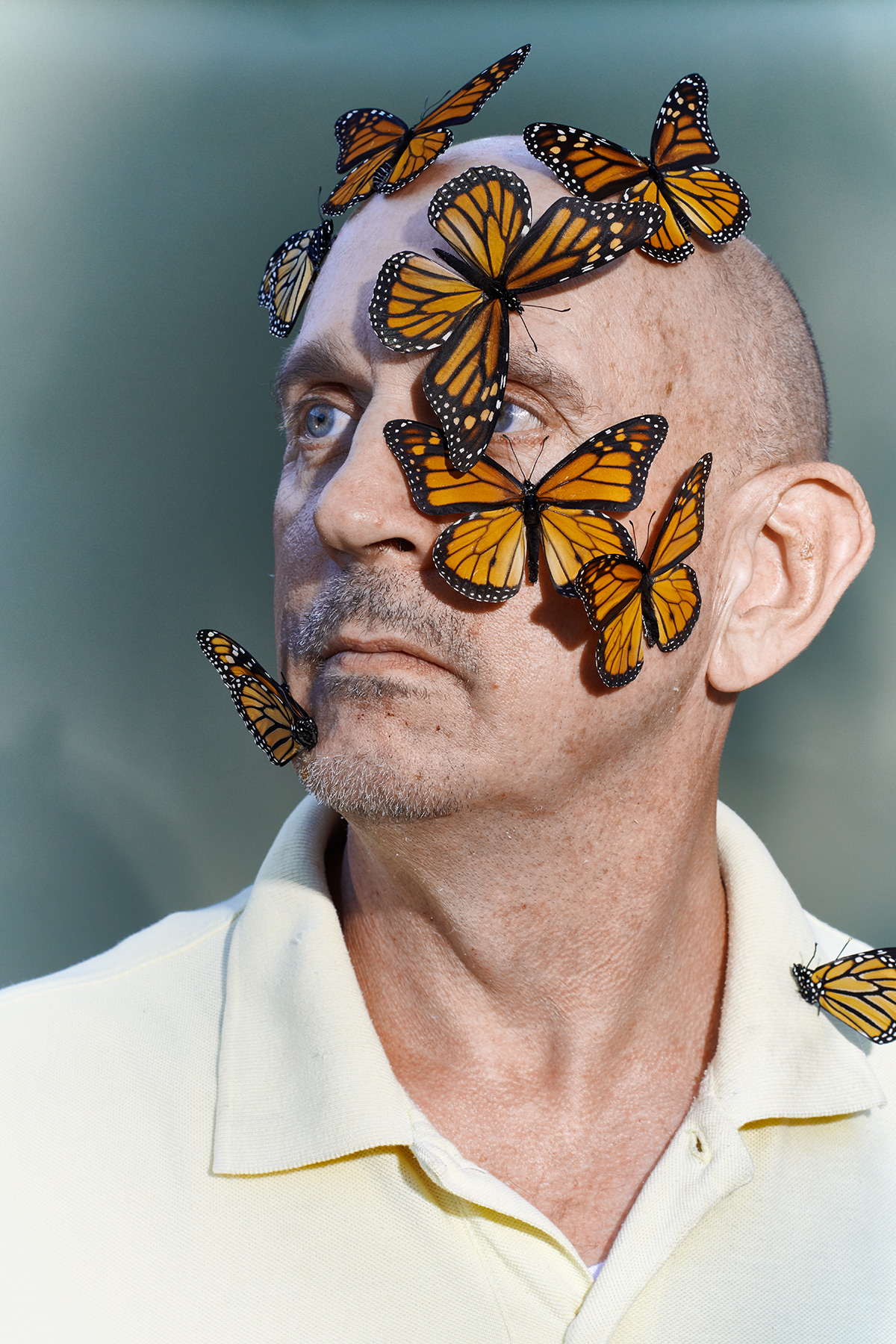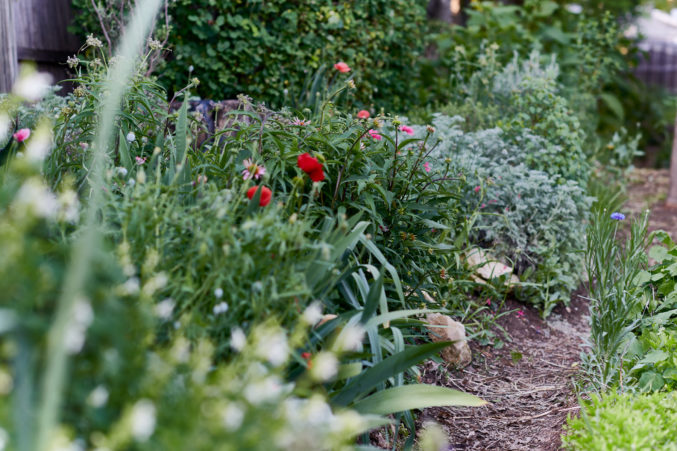Each fall, monarch butterflies east of the Rockies migrate thousands of miles from southern Canada to the mountains of interior Mexico, where they spend the winter. But habitat loss and climate change have led to such a drastic drop in population that the U.S. Fish and Wildlife Service will make a decision this month on possibly adding them to the Endangered Species list. In the meantime, one Oak Cliff gardener has made it his mission to make their annual Dallas pit stop more pleasurable. Van Johnson has turned his backyard into a 5-star Airbnb for winged guests.
Johnson has been gardening since he was a young boy. Both of his grandmothers were avid gardeners. One, a retired farmer, planted vegetables and fruits. The other was more into beauty, an ornamental gardener obsessed with irises, possibly to a criminal extent.
“We went to an abandoned house and my grandmother lifted me over the fence, handed me a trowel, and had me go dig up a chocolate-colored iris,” Johnson says. “I came back and handed her the iris and trowel, and she lifted me back over the fence. That’s probably what started me.”

Johnson now grows an organic garden at his Oak Cliff home, where he has lived for 22 years. He also moderates the popular Oak Cliff Gardeners Facebook page that has 2,100 members and a lengthy waiting list. Members exchange tips, hacks, and plant sale alerts, along with friendly banter. “It’s one of the nicest groups on the internet,” he says.
Three years ago, Johnson took a neighbor’s advice and turned his front yard into a perennial garden overflowing with fragrant plants like rosemary and oregano, Zinfandel vines bursting with grapes to attract birds, and shrubs like Jerusalem sage. He welcomes toads, bees, birds, caterpillars, and lizards—all parts of his mini ecosystem. He calls his technique slow gardening. He plants, waits, observes, and then adds a plant here, a rock there. The process is all part of the fun.
But Johnson’s showstopper is a butterfly garden that is tucked in the utility easement in the back alley. Cowpen daisies, mullien, spiderwort, and Gregg’s mistflower all coexist to attract the beautiful winged insects as they migrate to Mexico for the winter. During a good year, he can spot 20 to 30 butterflies per plant. Come October, Johnson welcomes neighbors and members of his gardening group to come by to see if they can spot a painted lady or monarch dancing around his garden.
Johnson’s Tips for Landing a Few Winged Friends This Summer
Butterflies like calm, sunny conditions.
“It can help to have larger shrubs bracketing in the butterfly-attracting perennials or at least on the side of the prevailing winds. Fragrant white mistflower is a woody shrub that blooms in fall and will be covered with many butterflies. This does double duty as both a windbreak for the other plants and a butterfly-attracting plant in its own right. The south or west side of a building or solid fence can also be a good location due to ample sun and the wind being blocked from one direction.”
Pay attention to your hardscape.
“White rocks also help with the microclimate. I like to use limestone rocks in butterfly gardens because it reminds me of the Hill Country, where many of these butterfly-attracting natives are endemic. They just look like they belong together.”
Choose drought-tolerant plants.
“Cowpen daisy is so named because of its ability to thrive in disturbed soil. It reseeds freely, so you need to be careful where you plant it. In the fall, it is especially attractive to painted ladies, so having some of this will keep butterflies in your garden after the monarchs have gone.”
 Supply the butterflies with sugar.
Supply the butterflies with sugar.
“Gregg’s mistflower has attractive dissected foliage and a flower that is reminiscent of an ageratum, but up to 2 feet tall. It will be covered with monarchs and queens in October. The monarchs, of course, need the calories from the nectar to continue their southward migration. The plant also has alkaloids that the male queen must have to create the pheromones to attract the female. When you plant this perennial, you are helping two separate butterfly populations.”
Add a pond or bog.
“If you have a garden pond, water snowball is an absolute must. If you don’t have a pond, these will work in a bog garden. Sink a watertight container into the ground—I like to use black plastic dish pans—and fill it with soil. Add water until you have mud. The water snowball will be very happy in this as long as you keep it very wet. If you have it near your birdbath, you can top them off at the same time a couple times a week.”
Don’t forget the caterpillars.
“In addition to nectar plants for the adults, to have a good population of butterflies, you of course also need host plants for the caterpillars. Monarch caterpillars can feed only on milkweed—it is their only source of food. Milkweed also provides the cardiac glycosides that the caterpillar ingests and retains as an adult that makes it distasteful to birds and other predators.”
Go organic.
“Needless to say, butterfly gardens must be organic. The average gardener considers aphids to be a huge evil, but butterfly gardeners know that the tender new growth on the top tells you the milkweed is organic. You can dispatch the aphids when you get the plant home. Many butterfly gardeners look for milkweed with aphids on them to be sure what they are getting is pesticide free.”








